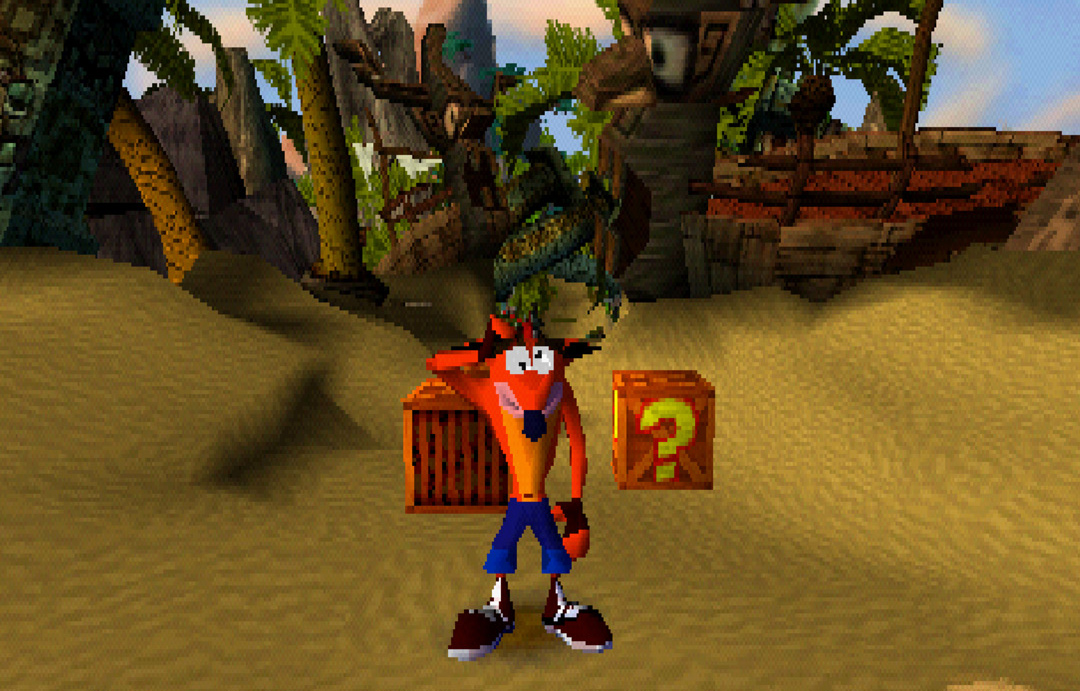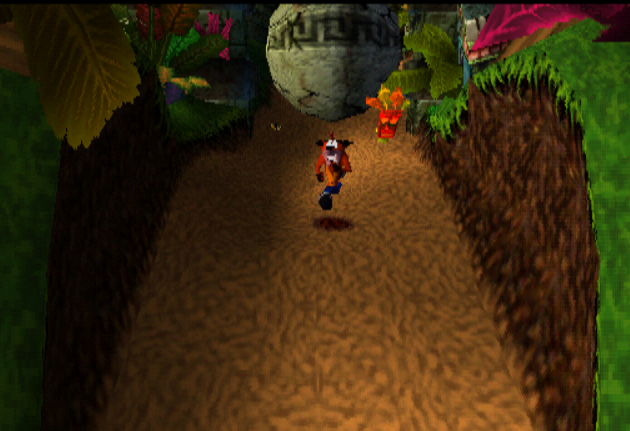I don’t think it is controversial of me to say that Naughty Dog is one of the greatest game developers of all time. This is the company responsible for some of not only the greatest video games of the PlayStation console, but arguably some of the finest games of all time: The Last of Us series, the Uncharted series, and my personal favorite, the Jak and Daxter Trilogy. Thankfully, I am not alone when I make this statement. As of May 2019, Uncharted 4 alone had sold over 15 million copies and has recently been made available on PC. When The Last of Us Part II was released back in 2020, the game sold four million copies in the first three days, making it the fastest-selling PS4 exclusive of all time. Additionally, Naughty Dog is doing well not just financially, but creatively as well as the company has been lauded for crafting some of the most gripping narratives within the video game medium. The company has received so much prestige that now organizations like the New York Times, a news outlet that usually doesn’t review games, published a review for The Last of Us Part II when it was first released.
Clearly, Naughty Dog has established itself as a reigning figure in not just the video game community, but within all of popular culture as well. But how did we get here? How did Naughty Dog become as prestigious as it is? How have their games become so culturally relevant that news outlets started making reviews of their games because of their reputation? Most would point to the first Last of Us as the moment that Naughty Dog became what it is. Others might point to the Uncharted series or even the Jak series. However, I would argue that we should look even further back in time. I believe that there is one game that not only put Naughty Dog on the map, but it arguably set the foundation for what would allow Naughty Dog to be what it is: that game being the original Crash Bandicoot.

For anyone unfamiliar with the game, Crash Bandicoot is a 1996 platformer, and it follows the story of a mutant bandicoot named Crash, who was created by Doctor Neo Cortex, an evil mad scientist who creates Crash for world domination purposes. However, when Crash escapes Doctor Cortex’s lair, he finds himself washed up on N. Sanity Island, which marks his journey of exploring all the island has to offer while also attempting to prevent Cortex’s plan for world domination. From a gameplay and level-design perspective, the game has taken clear inspiration from Super Mario Bros as there are many familiar elements to that of Mario. For example, like his human Italian counterpart, Crash can jump on (aside from using the spin attack) enemies to kill them, the game features some levels that showcase forward-scrolling and side-scrolling perspective, Crash gets an extra life if he collects 100 Wumpa Fruit, and Crash can even find power-ups through the Tiki Mask crates that allow him to survive additional hits from enemies.
At first glance, there doesn’t seem to be anything special about Crash Bandicoot. Not only does it lack the usual meaty, narrative-driven story that we’ve now come to expect from the rest of Naughty Dog’s games, but from a gameplay perspective, the game also doesn’t feel at all unique as many of its mechanics feel derivative of Super Mario Bros. I mean, for God sake, the game was jokingly called “Sonic’s Ass Game” by the company’s co-founders, Andy Gavin and Jason Rubin. How can someone possibly look at Crash Bandicoot and go, “oh yeah, that game, that definitely helped make Naughty Dog what it is today”?

I admit, I certainly felt this same way. As a huge fan of Naughty Dog, I was a bit disappointed at first when I loaded up the MADD Center’s PlayStation 2 and started playing Crash Bandicoot for the first time. The first couple of levels were not only easy to get through but felt standard in terms of the platforming genre. Sure, there were elements that I did appreciate. Not only was the design of Crash and the universe he lived in vibrantly colored and creatively designed, but there were some unique aspects of how Crash Bandicoot played that I could see in the rest of Naughty Dog’s catalog.
For starters, a large majority of the levels takes place from a third-person perspective in which Crash moves into the screen, and some levels even reversed this perspective such as during a level in which Crash must run away from a rolling boulder, causing him to move forward towards the direction where the player was sitting. While this may not seem like much now, this game was revolutionary at the time as Crash came out during a time where 3D was becoming more commonplace in games, meaning they weren’t just viewed from the top or from the side anymore. Games had more freedom of motion than ever, and Naughty Dog took advantage of this by not only giving players more freedom to move Crash around in different directions but the way the camera positioned throughout the game made Crash Bandicoot have an almost cinematic experience, something that Naughty Dog would continue replicating and perfecting in their future games. However, despite these initial praises, there wasn’t really anything about my first 30 minutes of game time that really impressed me.

However, I was immediately proven wrong when I got further and further in the game, and the reason was that the game got insanely more and more difficult as I progressed through the levels. In fact, at a certain point, I almost raged quit when I died to the Riper Roo (an insane blue mutated kangaroo) for what felt like the 20th time. However, in that moment of pure rage and insanity, I also had a moment of clarity that helped me realize not only what made this game so special, but also why this game would set the template for the rest of Naughty Dog’s future games, in ways some people might not realize. Now Crash Bandicoot is easily one of the hardest video games that I think I’ve played, but I realized as I kept playing that what made the game’s levels so difficult was how incredibly linear and restrictive they are. Now, I am not saying that Crash Bandicoot becomes an open-world game at a certain point, but what I’ve come to realize is that despite the freedom of motion you have in controlling Crash, the game still feels incredibly linear. Crash can only move in so many directions, so when you inevitably run in the various platforming puzzles and obstacles the game offers, there’s no other way around it. You must do everything as precisely and perfectly as possible.
Timing is everything in Crash Bandicoot, and everything from how far you jump to how long you bounce on a certain object will ultimately determine if you live and can move on to the next level. For example, the level, “Native Fortress”, was easily one of the harder levels I had to get through because not only are the amount of Tiki Masks and lives available to you limited, but there are so many obstacles and enemies in your path that you have to overcome them as perfectly as possible, or else you will die, and that’s exactly what happened to me so many times. Every time I accidentally jumped on the fire jumps either too early or too late, I would get burned to a crisp. Every time I didn’t time my jumps correctly, I would either plummet to my death or an enemy would knock me off the platform. Every time I didn’t move in a certain direction enough, I would get punished by dying, and the most frustrating of that moment came when I rode a hog, and the game would punish me if I didn’t turn to the right enough or jump high enough. The game constantly demands perfection from how you play the game, and if you are not properly prepared for what each level has to offer, then the game punishes you for it.

These aspects of linearity and precision are not only what makes Crash Bandicoot a great game, but it also set the template for the rest of Naughty Dog’s games, at least in terms of gameplay. In fact, it’s honestly shocking how much I could see something like the “Native Fortress” level in games like Uncharted or The Last of Us. While those games certainly have more freedom in terms of open space and movement, there’s still a sense of linearity that forces the player to move and play in the way Naughty Dog intends them. For example, in the enemy encounters of The Last of Us, the player can technically approach enemies in any way they see fit, but the player not only has limited resources at their disposal, but they also can’t really move around them as they can easily be spotted and killed.
Therefore, to ensure that the player lives and survives the enemy encounters, they need to be incredibly precise in terms of not only how much ammo and weapons they plan on using, but they also need to be precise in terms of how they kill certain enemies and at what speed. This demand for perfection and preparation in The Last of Us is no different than jumping on the right platform at the right time or moving to the right at the exact time in Crash Bandicoot. This level of precision, linearity, and pressure has featured in all of Naughty Dog’s titles, and it all started the moment Crash washed up on the beach of N. Sanity Island. The way Naughty Dog designs its levels and enemy encounters have become a staple in their collection, and while the company has certainly moved to more mature games with much deeper narratives and stories, they would not be where they are now celebrating the success of their most recent game, The Last of Us Part II, if it hadn’t been for Crash, aka, “Sonic’s Ass Game”.


